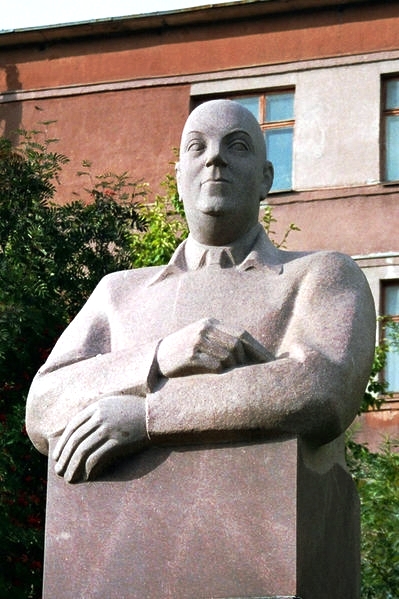
Vox pop
Fersman published extensively, including specialist and popular books. Geochemistry for Everyone
2 (1958) is of particular interest because it emphasises how the Russian school of geochemists made extensive use of geochemistry to solve practical problems – quite a different approach from that of V M Goldschmidt, whose Geochemistry
23 was published at almost the same time (1954). Fersman received major honours, including the Lenin Prize (1929), the Stalin Prize (1942, for the study of ‘useful minerals of the Kola Peninsula’), the Wollaston Medal of the Geological Society of London (1943 - one year before Goldschmidt) and the Order of the Red Banner of Labour. The Russian Academy of Sciences has an award for outstanding achievements in mineralogy and geochemistry named for Fersman, and he is also remembered in the name of the research vessel, RV Geolog Fersman.
Fersman died in the Soviet Georgian city of Sochi on 20 May 1945, the result of bad health and overwork over a number of years
4. He was best known for his work understanding and exploiting the Soviet Union’s mineral wealth, but he also maintained wide scientific interests throughout his career. He was also a great populariser of geology and had many administrative responsibilites through which he furthered the geological sciences in Russia.
Fersman’s status in his home country can perhaps best be judged in the words of Academician V A Obruchev
21, who wrote in his obituary: “…we have lost a big man, a man tireless in work and in quest, a man with a limitless range of interests and boundless potentialities and talent, a trail-blazer in science, a fine orator and populariser, and with the priceless gift of infecting all around him with his dynamic energy and enthusiasm.”
Acknowledgements
I thank Dr G A Cherkashov, Professor R J Howarth, Professor K -H Wedepohl and Professor Y L Voytekhovsky for their helpful comments, Dr Sue Bowler for editorial assistance, and Professors Y L Voytekhovsky of the Kola Science Centre, RAS, Apatity and M I Novgorodova of the Fersman Mineralogical Museum, RAS, Moscow, for sending me a number of outstanding photographs for inclusion in this article.
Related interest
- The history of the Fersman Mineralogical Museum www.fmm.ru/historyen.htm
- Milanovsky, E E 2004 Three sessions of the International Geological Congress held in Russia and the USSR (1887, 1937, 1984) Episodes 27, 101-106
Footnotes
~The presentation of the Wollaston Medal to Fersman was made to a Mr A M Krainsky, Attaché to the Soviet Embassy, who received it on behalf of the recipient (Quart J Geol Soc Lond XCIX; xlv-xlvi )
#Dr G P Glasby, Department of Geochemistry, GZG, Goldschmidtstr 1, University of Göttingen, Germany:
g p glasby@talk21 com
* Geoff Glasby’s other features in this series featured Viktor M Goldschmidt and Lawrence R Wager – see
Geoscientist 17.3 March 2007 pp22-27, and
17.12 December 2007 pp20-25.
Selected works by A E Fersman
- Precious and Semi-Precious Stones (1920)
- Geochemistry in Russia (1922)
- Chemical Elements of the Earth and the Cosmos (1923)
- Three Years beyond the Arctic Circle (1924),
- Geochemical Migration of the Elements (Fersman 1929)
- Mineralogy for Everyone (first edition 1928, fifth edition 1935)
- Four volumes on Geochemistry between 1933 and 1939 (e.g Fersman 1933)
- The Scientific Study of Soviet Mineral Resources (1935)
- The Search for Mineral Deposits on the Basis of Geochemistry and Mineralogy (1939)
- Minerals of the Urals (vol. 1, elements and sulphides) (editor, 1941).
- Twenty-Five Years of Soviet Natural Science (1944)
- The March of Soviet Science (1945)
- Reminiscences about Minerals (1945)
- Two books on geochemistry published posthumously in English (1952).
- Geochemical and mineralogical methods of prospecting. U.S. Geological Survey Circular 127: 1-37 (1952).
- Geochemistry for Everyone (1958)